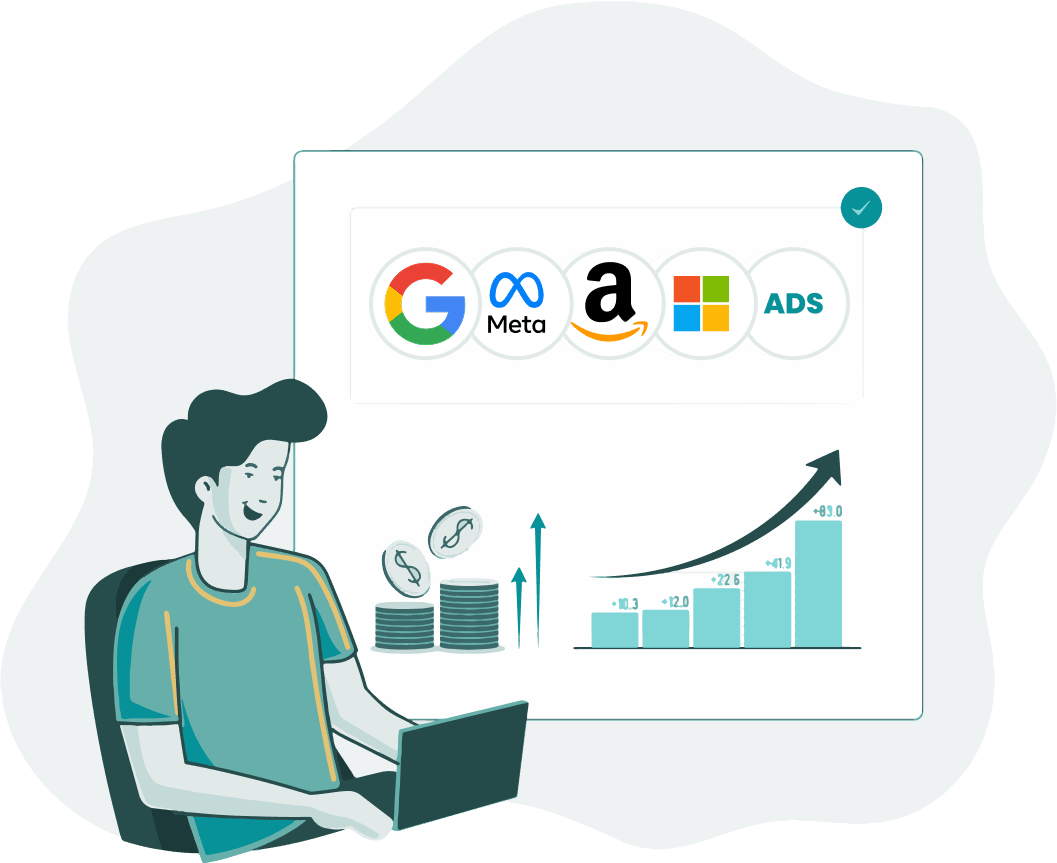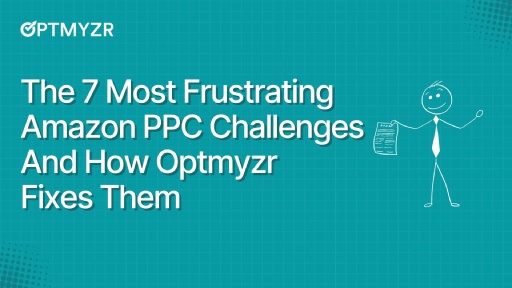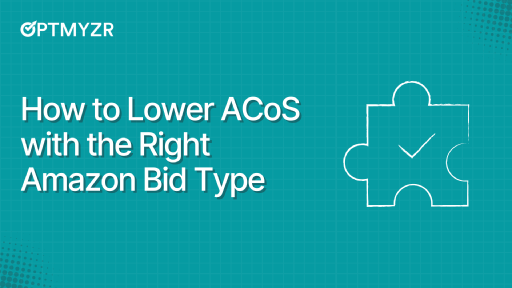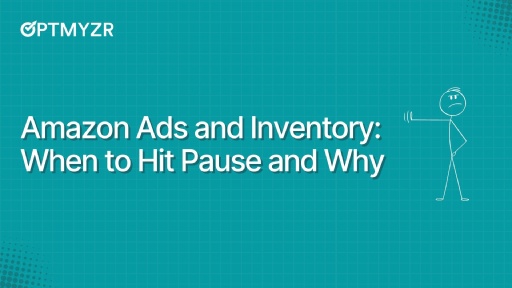If you’re running Amazon ads without keeping an eye on the Buy Box, you’re flying blind.
Your campaigns are active. Your budget’s burning. And conversions? They’re going to whoever happens to own the Buy Box at that moment, which might not be you.
It’s not that your ads are broken. It’s that your strategy isn’t synced to the most important piece of the puzzle.
Optmyzr helps fix that. It gives you the automation and visibility you need to connect Buy Box status with ad performance, so you’re only spending when you’ve actually got a shot at the sale.
Let’s dig into what the Buy Box really controls and how to build smarter campaigns around it.
The Buy Box: Amazon’s shortcut to the sale
The Amazon Buy Box is the section on the product page where shoppers can choose to ‘Add to Cart’ or ‘Buy Now’. The box contains information about the price, when the item will be delivered, and the quantity you’re ordering.
What is the significance of the Buy Box?
Multiple sellers often offer the same product on Amazon, but only one can win the Buy Box at a time, which is the most prominent call-to-action on the page. This spot drives the majority of sales.
When you click “Add to Cart” or “Buy Now,” you’re buying from the seller currently holding the Buy Box. Check back later, and a different seller might be in that spot, based on real-time performance and pricing.
Other sellers can still be found under “Other Sellers on Amazon,” but the Buy Box winner gets prime placement, which is crucial for visibility and conversions.
How does Amazon select the Buy Box winner?
Only one seller at a time can “win” the Buy Box because Amazon wants to streamline the buying experience.
Instead of making the shopper compare multiple offers, Amazon automatically selects the seller it deems best based on factors like:
- Price (including shipping)
- Shipping speed and reliability
- Stock availability
- Seller performance metrics (e.g., feedback score, order defect rate)
Why the Buy Box deserves your attention
1. Ads can still show even without the Buy Box
Your ads will run even if you don’t currently occupy the Buy Box position. It can drive traffic, but not conversions.
The impact: Unless you win the Buy Box on the product detail page, your offer won’t be the one customers check out with. That sale often goes to a competing seller. So you’re paying for visibility, but someone else is closing the sale. |
2. Conversion rates can drop without the Buy Box
Amazon’s Buy Box streamlines the shopping experience for customers. In fact, 83% of all sales go to the seller occupying the Buy Box position.
The impact: Even with strong ads and optimized product listings, sellers without the Buy Box may see a significant decline in sales. |
3. Low Buy Box Win Rates = Higher Ad Costs, Lower Visibility
Amazon’s algorithm considers your Buy Box win rates when determining ad relevance and performance. A low win rate can lower your ad’s quality score since your offer may seem less competitive.
The impact: A lower quality score often results in higher CPCs since Amazon needs more incentive to show less competitive ads. Aside from this, Amazon might assume that your offerings are less relevant to shoppers, and this can impact your organic rankings. |
The 5 Buy Box factors that can make or break your ads
Winning the Buy Box is all about strategically balancing different factors so your offering is the most competitive and reliable option for Amazon shoppers.
1. The pricing strategy
Amazon looks at something called the landed price (item price + shipping cost) and checks if it is competitive enough to win or retain the Buy Box. Offering the cheapest pricing doesn’t guarantee you the Buy Box. In fact, if the price drops too low, your listing can be suppressed or the Buy Box may go to another seller.
👉 Watch out for pricing mismatch across channels—offering a better deal on your own site or another marketplace can cause Amazon to pull your Buy Box. |
2. Fulfillment
If you’ve outsourced shipping and logistics to Amazon (called FBA or Fulfillment By Amazon), you’re likely to get some preferential treatment over sellers who handle shipping in-house. They are also eligible to win the Buy Box but unlike FBA sellers, these sellers will also need to rely on other factors like shipping speed, order defect rate, seller ratings, and on-time delivery rates.
3. Inventory
If your inventory on Amazon runs out of stock frequently, Amazon can delist your products even if you offer the lowest price. This is because Amazon prioritizes sellers who can consistently fulfill orders quickly and reliably.
💡Pro Tip: Optmyzr’s Rule Engine allows you to set up a strategy so you can automatically pause/re-enable ads based on your inventory levels. This way you’re not paying for clicks that cannot convert and avoid negative signals that can impact your Buy Box eligibility. |
4. Account health
Amazon doesn’t just look at what you sell or how much—your day-to-day seller behavior matters as much. This makes it very important to closely monitor account health metrics like order defect rate, late shipment rate, cancellation rate, and on-time delivery.
When your account metrics stay within Amazon’s performance thresholds, you stay eligible more often, even against sellers with slightly lower prices.
5. Listing quality
Your Amazon product listing is the first thing shoppers see when they’re browsing for something. Poor images, weak titles, and low relevance can impact your conversions and ranking, both of which play a role in higher buy box win rates. Make sure you use richer visuals, detailed product storytelling, and highlight benefits to improve your listing score.
A strong listing creates a positive feedback loop by increasing conversions. This in turn tips the scale in your favor with stronger metrics, more visibility, and subsequently more Buy Box wins.
How to align your ads with the Buy Box
Running Amazon ads without owning the Buy Box means compromising your ad spend, conversions, and CPCs.
Here are a few tips on how you can adopt a smarter ad strategy around the Buy Box.
1. Understand the Buy Box status
Check your Buy Box status at the moment you plan to activate or scale your ads. If you’re not winning it, especially for high-competition or shared listings, you may want to consider delaying your ads or adjusting the ad investment. This ensures you’re only spending when you have a real shot at converting and owning the sale.
📌Example: You launch a new product. You don’t have reviews yet, so your Buy Box share is unstable. Instead of launching a full campaign, you:
|
2. Monitor the Buy Box daily for active campaigns
When you’re actively advertising your products, it’s important to keep a daily check on your Buy Box status to see whether you’re winning or not.
This makes sure you don’t miss windows where your ads are burning the budget and helps in diagnosing sudden performance drops. More importantly, if you have a record of daily data, you can actually use automation to pause ads or lower bids based on the Buy Box share.
You can check your Buy Box share or percentage on Amazon’s Business Reports.
📌Example: If your Buy Box share drops to 25%, only 1 in 4 shoppers can actually buy from you. With Optmyzr’s Rule Engine, you can automate your ad strategy based on Buy Box data. Just feed your Business Reports into Optmyzr via custom data integration, then set up rules like: Tactic 1: If Buy Box % < 30% AND ROAS < 2 THEN reduce bid by 40% Tactic 2: If Buy Box % > 80% AND CPC is stable, THEN Increase bid by 15% |
3. Let ad data guide pricing
Noticed your CPCs suddenly spiking but conversions staying flat? That’s often a sign you’ve lost the Buy Box or your price isn’t competitive anymore.
When that happens, Amazon sees your offer as less relevant, so CPCs go up, and shoppers start buying from someone else.
Keeping an eye on your ad data can help you spot this before it reflects in your Buy Box report.
Use Optmyzr’s Account Alerts to notify you whenever there is a spike in CPC, a decline in ROAS, or a rising ACoS.
Any changes in these metrics may mean you need to reassess your pricing strategy. It may also mean that Amazon sees your offer as less competitive, which can cause your relevance to drop.
4. Run Sponsored Product ads to protect visibility
Say you lose the Buy Box but still want to keep your listing in the game till you win it back to protect organic rankings, traffic, and sales.
Instead of disappearing completely, a good strategy is to run Sponsored Product ads so you still show up in searches and protect your brand presence. Even if conversion is lower, you stay top-of-mind and may still pick up sales from comparison shoppers.
5. Use brand defense strategies
If your competitor wins the Buy Box on your listing, you’re no longer the default seller. In such scenarios, you want to retain shopper attention, reduce sales to low-quality sellers, and protect your brand.
This is where you can run brand defense strategies such as:
- Branded keyword ads: Bid on your own brand name and product keywords to ensure your listing stays at the top of search results
- Sponsored Display ads for retargeting: Remarket to shoppers who viewed your product but didn’t purchase to re-capture high-intent traffic that may have slipped away due to your Buy Box loss.
- Product targeting campaigns: Target your own ASINs so that your version of the listing shows up under “Sponsored Products related to this item.
6. Manage ad performance during inventory transitions
If you’re transitioning from FBM (Fulfilled By Merchant) to FBA or waiting for an FBA restock, your chances of winning the Buy Box decrease temporarily. This is because during this period, your fulfillment method is weaker or delayed.
During such periods, it’s best to scale back on your ads or switch tactics to protect campaign and budget performance. What you can do is:
- Reduce daily budgets or lower bids on SKUs undergoing fulfillment transition temporarily to minimize spend while the Buy Box win rate is unstable.
- Run branded or Sponsored Brand ads to keep visibility up without pressuring sales performance.
How to review Buy Box impact over time
Once your ad strategy is aligned with the Buy Box, the next step is to track performance consistently. It’s always best to establish a proper reporting cadence so you can continuously optimize your ad efficiency and spot issues before they escalate.
Here are a few tips on how you can structure your reporting frequency.
1. Weekly reviews
Buy Box winners can rotate daily, sometimes even hourly, based on different factors. Weekly reviews can help you identify patterns that may be affecting your ad performance.
During weekly reviews, look out for:
- Watch Buy Box shifts on top-spending ASINs: If conversions drop, the Buy Box may be the issue.
- Review SKUs triggering auto-pause or bid cuts: Frequent pauses may indicate underlying problems like price, inventory, or fulfillment gaps.
- Track how Buy Box status impacts key metrics: Finding a clear correlation helps you optimize ad spend
2. Monthly reviews
While weekly checks catch short-term fluctuations, monthly reviews reveal structural trends, like why you’re consistently losing the Buy Box on certain SKUs.
During monthly reviews, keep an eye out for:
- Price changes across your catalog vs. top competitors: Adjust pricing or match competitors where you’re losing share
- Fulfillment mode comparisons (FBM vs FBA impact on Buy Box share): Consider switching high-potential SKUs to FBA if FBM isn’t competitive
- Inventory lags or shipping performance dips: Optimize restocking cycles to maintain consistent eligibility
3. Quarterly reviews
Quarterly reviews help you zoom out and optimize ad spend at the portfolio level.
What to look for:
- Products with high Buy Box % + strong ROAS: These are your most reliable revenue drivers—scale spend confidently where your ads are actually closing the sale.
- Campaigns hurt by low Buy Box control: Reduce or pause investment to protect ROAS and clean up performance data.
- Budget split across stable and listings: Misallocated spend can drag overall efficiency. Shifting budget toward Buy Box-stable ASINs boosts returns and protects visibility.
Smarter Amazon ads start with Buy Box awareness
The Amazon Buy Box is a critical feature that can directly impact a seller’s sales and profitability. But winning the Buy Box depends on a combination of factors. The most important takeaway for sellers is that it’s absolutely essential to make sure that every part of your ad strategy is strategically aligned with your pricing, inventory, fulfillment, and real-time Buy Box status, so you’re only spending when you have the best shot at winning the sale.
Optmyzr offers several advanced capabilities that allow you to automate ad decisions, monitor key metrics, and stay ahead of costly surprises.
Sign up for Optmyzr’s 14-day free trial to see how you can easily turn your Amazon ads into a profit engine.









